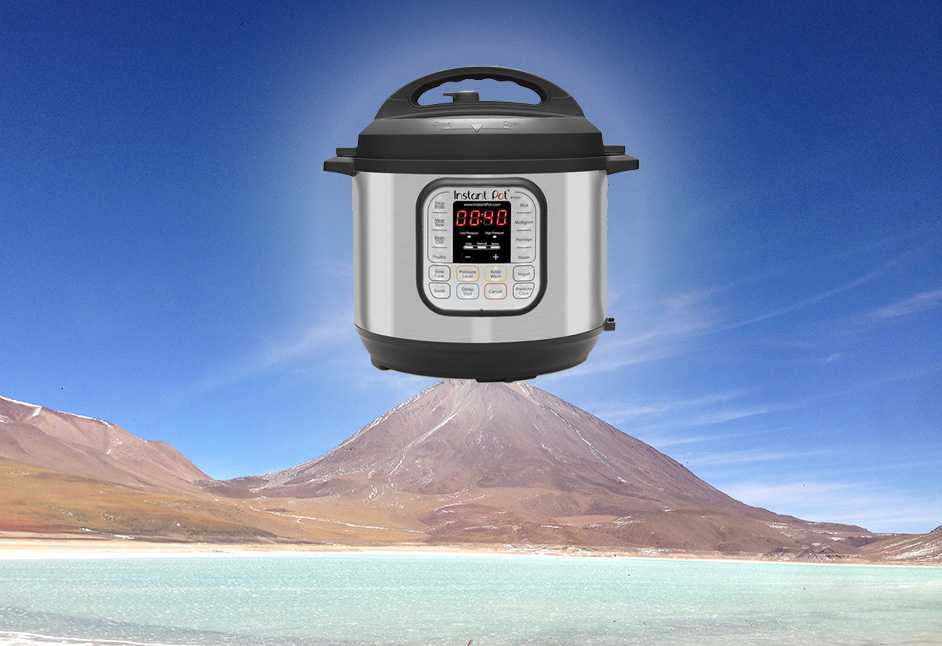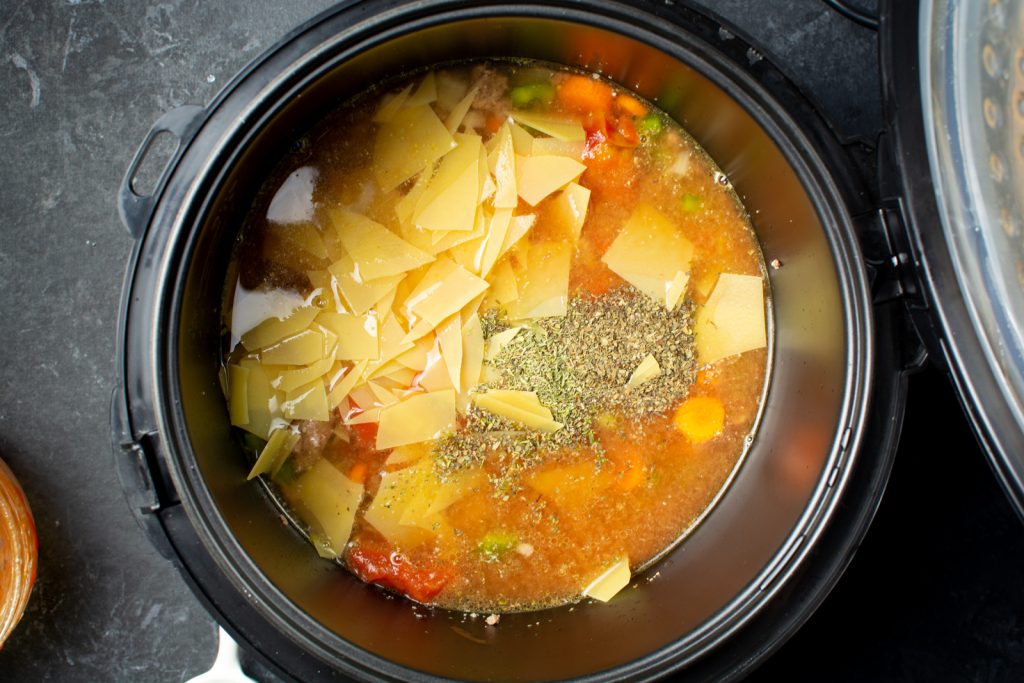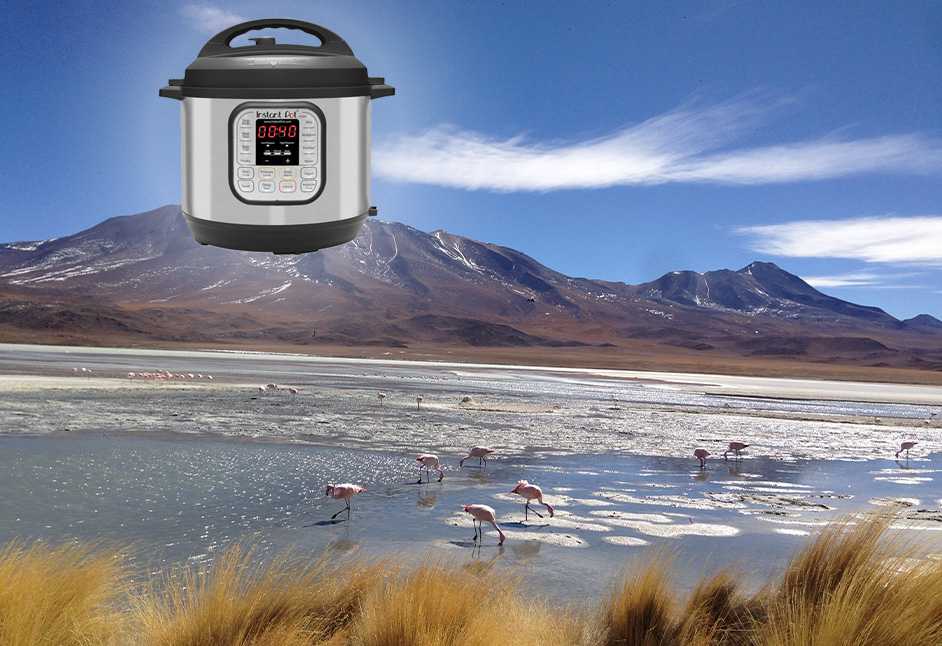Do you live in a high altitude zone? You've maybe heard that pressure cooking helps cook things better and faster especially in these zones.
Why is it that pressure cookers are recommended for higher altitude locations?
Let me briefly explain.

Table of Contents
How Altitude Affects Cooking Times & Temperatures and Why Pressure Cooking Can Help
First to wrap your head around the way water temperature changes based on altitude you have to watch this video. This is seriously a cool video. These dudes went to Mt Everest Base Camp and boiled water on video to demonstrate how cooking temperatures can drop as the elevation increases.

For reference purposes at Everest base camp the water in the video boiled at 82 degrees celcius or about 180 degrees Fahrenheit!
If you live in a high altitude area, 3,000 ft above sea level or higher, more than likely, you've heard how you must invest in a pressure cooker, but you may be wondering why are pressure cookers recommended for high altitude cooking.
Due to the thin air of upper elevations compared to that of sea level elevation, the higher altitude has less atmospheric pressure, less oxygen, and is much drier on average. As a result cooking anything and everything takes a little bit longer than standard cooking times stated in many recipes.
As the air is much drier, moisture evaporates at a faster pace from everything, including food. According to the New High Altitude Cookbook, a good rule of thumb is to add 5% to your cooking time for every additional 1,000 feet (after the first 2,000 feet). For example, if you are at an elevation of 7,000 feet, you will increase the cooking time by 25%.

At Higher Altitudes What Temperature Does Water Boil At?
The standard boiling point of water, 212 degrees Fahrenheit, is only true at sea level. Once you start to ascend higher, the boiling temperature of water decreases by a little under 1% for every 500 feet.
As the video above showed by the time you get to extreme altitude water's boiling temperature can drop all the way down to 180 degrees!
A common misconception is that it takes longer for the water to boil due to the decreased boiling point. However, that is not accurate, the water actually begins to boil faster, but because of the lowered temperature point, it is not as effective as boiling at the standard temperature.
The lower boiling point of water at high altitude produces less heat and will increases your cooking time. It will also make it harder to kill bacteria by boiling alone.
What Cooking Time Adjustments Need to be Made For High Altitude Cooking?
Most people don't plan on doing math when cooking, but for high altitude cooking, it is a necessary evil.
To calculate how to adjust your cooking time, find out at what altitude you reside and the appropriate percentage increase, then times it by the standard recipe cooking time.
For example, if you live in Taos Ski Valley, New Mexico, your altitude is 9,321 feet and you would have to adjust your cooking time by 35%. If a standard sea level pressure cooker recipe calls for a cooking time of 30 minutes, you would adjust your cooking time with the following formula:
30 (minutes) X 0.35 (percent increase) = 10.5 (minutes added to the standard cooking time)
30 + 10.5 = 40.5
You would cook your food for 40-41 minutes instead of 30 minutes.

Why Are Pressure Cookers Recommended for High Altitude Cooking?
While you do adjust your cooking time for pressure cookers as well as for some standard cooking methods, you still save time and energy. Instead of a delicious and juicy roast taking 8-10 hours in a crock pot, you can achieve the same results in 35-60 minutes in a pressure cooker, depending on how high you are above sea level.
With high altitudes, pressure cooking doesn't just cook food faster than traditional methods, it also makes food retain more moisture, with better tasting results.
As stated above, thin air means dry air and dry air means dry food. Moisture evaporates much faster from your food as it cooks if it is not retained in some way. Pressure cooking replaces and mimics the moisture and atmospheric pressure that you lose at high altitudes, leaving your food much juicier and succulent.
Pressure cooking is a great way of making sure the food you eat is cooked through and safe to eat. As the boiling point of water is below 212 degrees Fahrenheit, your food can end up undercooked and dangerous to eat with some standard cooking methods.
Cooking with high pressure allows you to create delicious foods much quicker, even with adjusted cooking times, than standard cooking methods, and ensures they are safe for your and your family to eat do to the increased pressure causing temperatures to get higher.
Pressure cookers are recommended for high altitude cooking because they reduce standard cooking method times, produce moist and tender foods and increases food safety, which reduces the risk of food-borne illnesses.
If you are planning on boiling food at all at a high altitude you should always consider the benefit of using a pressure cooker instead for the increase in temperature alone. High altitude pressure cooking times are a bit longer than sea level pressure cooking times but not by that much.
Looking to purchase a pressure cooker for canning...right now living in lower altitude but plan on moving to higher altitude in a year....what do I need to look for in my pressure cooker?
Thank you!
Beautiful images Corrie! Where did you find them?
LOL thank you ^_^ I took them myself.
If my pressure cooker is overfilling while cooking should i relesse the vent valve to vent instead of seal position?